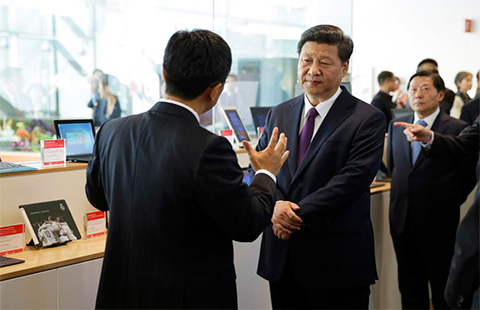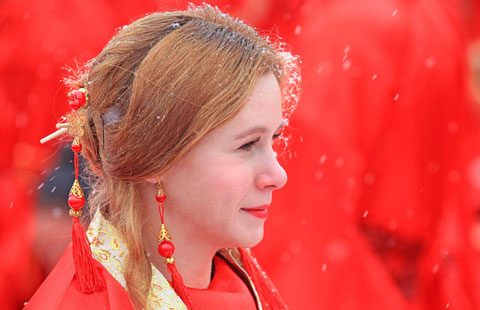Living conditions of both urban and rural residents have continued to improve. In 2004, Xinjiang started an earthquake-resistant and comfortable housing project; and since 2010, it has launched projects of offering comfortable housing and enriching the people, settlement of herdsmen for developing animal husbandry, and urban affordable housing. By 2014, more than 4.8 million farmers and herdsmen and 2.07 million middle- and low-income urban residents had moved into new homes. The average flood space for an urban household was 85 sq m, and that of a rural household was 105 sq m. All urban households and 72 percent of rural households have been provided with facilities for heating. In urban areas, the water supply covered 96.3 percent of the population, and the centralized sewage treatment rate reached 78.6 percent. Sixty-three percent of domestic garbage underwent hazard-free treatment. In built-up urban areas, the green coverage rate was 34.9 percent, and per-capita green park area was 10.7 sq m. Projects to improve the communal environment in rural areas and demonstration projects of comprehensive improvement of rural environment were launched, gradually bringing about a clean and neat village environment for more than 2 million farmers and herdsmen.
Continuous development has been seen in education. Since 2010, education in the region has ushered in a new period of rapid development. Over the past five years, education expenditure has exceeded RMB250 billion. In 2014, the proportion of education expenditure in theGDPincreased to 6.47 percent. Xinjiang has 9,230 schools of various types and at all levels, with 4,734,800 students and 338,200 full-time teachers. From 2010 to 2014, the three-year kindergarten enrollment rate grew from 51 percent to 72.4 percent; the proportion of junior high school graduates getting enrolled into high schools increased from 74 percent to 91 percent, while the gross high school enrollment increased from 67 percent to 84 percent. The university and college admission rate grew from 64 percent to 79 percent, and the gross enrollment rate of higher education increased from 22 percent to 31 percent. This brought Xinjiang to a level of higher education take-up similar to the rest of the country. A full system of vocational education was in place, with 176 secondary vocational and technical schools providing for 219,500 students.
Bilingual education has undergone full development. As of the 1950s, ethnic minority students have gradually been offered bilingual courses, thus ensuing steady development in this regard. In 2014, a total of 269,400 Xinjiang students - from pre-school to high school - were receiving bilingual education, and the coverage of bilingual education in various forms reached 100 percent. From 2010 to 2014, the take-up of two-year pre-school bilingual education grew from 59 percent to 89 percent. Practice has proved that bilingual education has further promoted relations among different ethnic groups, in addition to improving the employability of the ethnic minorities.

 Here's what's on the menu for the state dinner
Here's what's on the menu for the state dinner
 President Xi visits Microsoft campus in Seattle
President Xi visits Microsoft campus in Seattle Xi revisits Lincoln High School after 1993 bond
Xi revisits Lincoln High School after 1993 bond
 Chinese, US business leaders gather at roundtable meeting
Chinese, US business leaders gather at roundtable meeting Xi visits assembly line of plane manufacturer Boeing in US
Xi visits assembly line of plane manufacturer Boeing in US First Lady tours Fred Hutchson Cancer Research Center
First Lady tours Fred Hutchson Cancer Research Center
 Boeing to sell 300 planes to China
Boeing to sell 300 planes to China Sino-US ties need more understanding: Xi
Sino-US ties need more understanding: Xi















